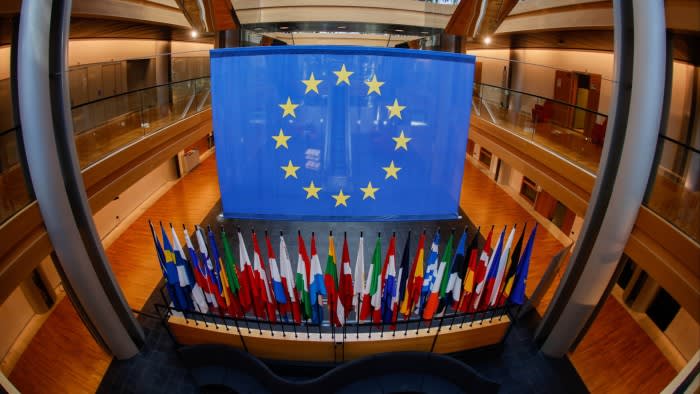Unlock the Editor’s Digest for free
Roula Khalaf, Editor of the FT, selects her favourite stories in this weekly newsletter.
The writer is chief executive of the Investment Company Institute
In May, the US and Canada moved from settling securities transactions two days after a trade to one. This shift to “T+1” was a resounding success. The EU should follow suit.
T+1 means greater efficiency, increased liquidity and enhanced risk mitigation. As policymakers focus on strengthening capital markets, adopting T+1 has become critical for all major financial centres.
The UK has announced its intent to transition by year-end 2027. The Swiss are keen to co-ordinate with the UK and EU. In the EU, a firm commitment to a date certain for T+1 is needed now, along with full support for the significant investment by industry to modernise markets, enhance capital markets competitiveness and deliver benefits to investors.
Given that work, and the intricacies of the EU legislative process, European policymakers should announce in the clearest terms that they will make all necessary legal and regulatory changes to enable adoption of T+1 by the close of 2027 in alignment with the UK, including through a formal amendment of the EU’s Central Securities Depositories Regulation.
Under the new T+1 regime in the US, 95 per cent of transactions are affirmed on the trade date itself, a marked improvement on the 73 per cent rate recorded in January 2024. The settlement “fail rate” was just 2 per cent — consistent with the figure under T+2. Margin posted in the clearing fund fell by $3bn a day, a 23 per cent drop from previous three-month averages, freeing up $750bn annually for broker-dealers to use elsewhere. These results showcase how a shorter settlement cycle creates a more efficient, resilient market. European investors deserve these same advantages.
Adopting T+1 will strengthen European capital markets, and reduced counterparty risk is a central reason why. Currently, the two-day gap between trade execution and settlement creates the risk that a counterparty could default before a trade is finalised. This risk is especially significant during market volatility. Moving to T+1 reduces this exposure, offering better protection for investors and creating a more stable market environment.
A shorter settlement cycle also will lower costs and improve capital efficiency, reducing the need for collateral. This would unlock billions of euros otherwise tied up in margin. This freed-up capital can be reinvested into new opportunities, boosting market activity. For investors, this means lower trading costs and more efficient use of capital.
The faster trades settle, the faster investors can reinvest. T+1 would increase liquidity in European markets and improve price discovery, again lowering transaction costs. This will create a more dynamic marketplace.
Cross-border harmonisation between capital markets is another important benefit. North American and other international markets are on T+1. The UK is following suit. The EU risks falling behind. EU-listed ETFs, for instance, currently settle trades on a T+2 basis, but, if these products have exposure to US securities, those transactions must settle on T+1. This mismatch creates unnecessary complications and costs. Adopting T+1 will reduce these cross-border inefficiencies, ensuring the EU stays a competitive and attractive destination for investment.
That competitive edge has been a key focus of recent European reports on the Savings and Investments Union. T+1 would keep European investors on a level playing field globally and drive innovation in financial technology. It would also help integrate Europe’s capital markets and keep the EU, UK and Switzerland in sync.
This will be a large-scale undertaking. The move will require modernisation of market infrastructure, technology and back-office operations. In the US, buy-side participants worked with the broker-dealer community and the main central clearing party to produce a detailed playbook for the transition. This work enabled the US Securities and Exchange Commission to set a clear transition date. We offer similar support to EU policymakers.
As we saw in the US, it’s worth the investment. Yet the collective action problem requires policymakers to put their weight behind the move. ICI and our fellow members of the EU Industry Taskforce delivered recommendations to the European Securities and Markets Authority this week. With 41 trading exchanges and 30 central securities depositories under the supervision of various European authorities, a clear timeline is critical. Brussels must not equivocate; it must fully and clearly back the initiative at the highest levels politically. Delay would be too costly.
https://www.ft.com/content/746570ba-3933-4a59-a2d4-120c89281165


